People who like ancient monuments should definitely visit the Panathenaic Stadium in Athens. This massive stadium is one of the most important attractions in Athens. It’s used for various events, and is also open to visitors.
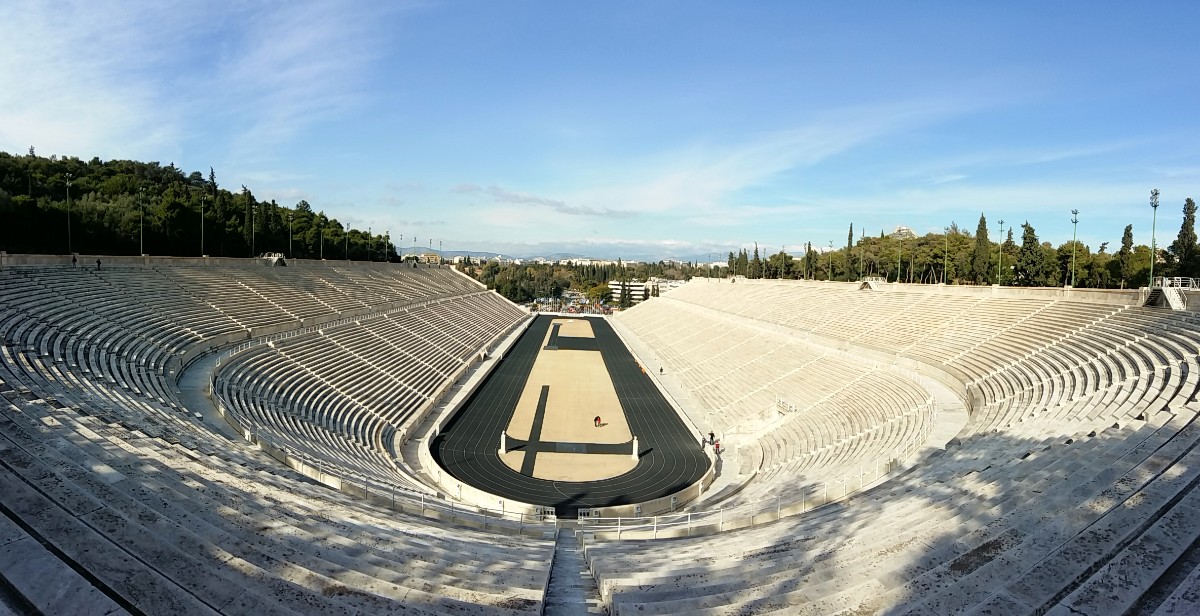
From ancient Athens to the first modern Olympic games
Close to the National Gardens of Athens and the temple of Zeus, you will find the amazing Panathenaic Stadium.
Built on the site of an earlier stadium, this impressive monument, which hosted the first modern Olympics in 1896, is a popular tourist attraction. It’s also an important landmark in the city of Athens.
Let’s find out a little more about the site’s long history, which spans a little over 2,300 years. We’ll first need to go back to the times of Ancient Greece.
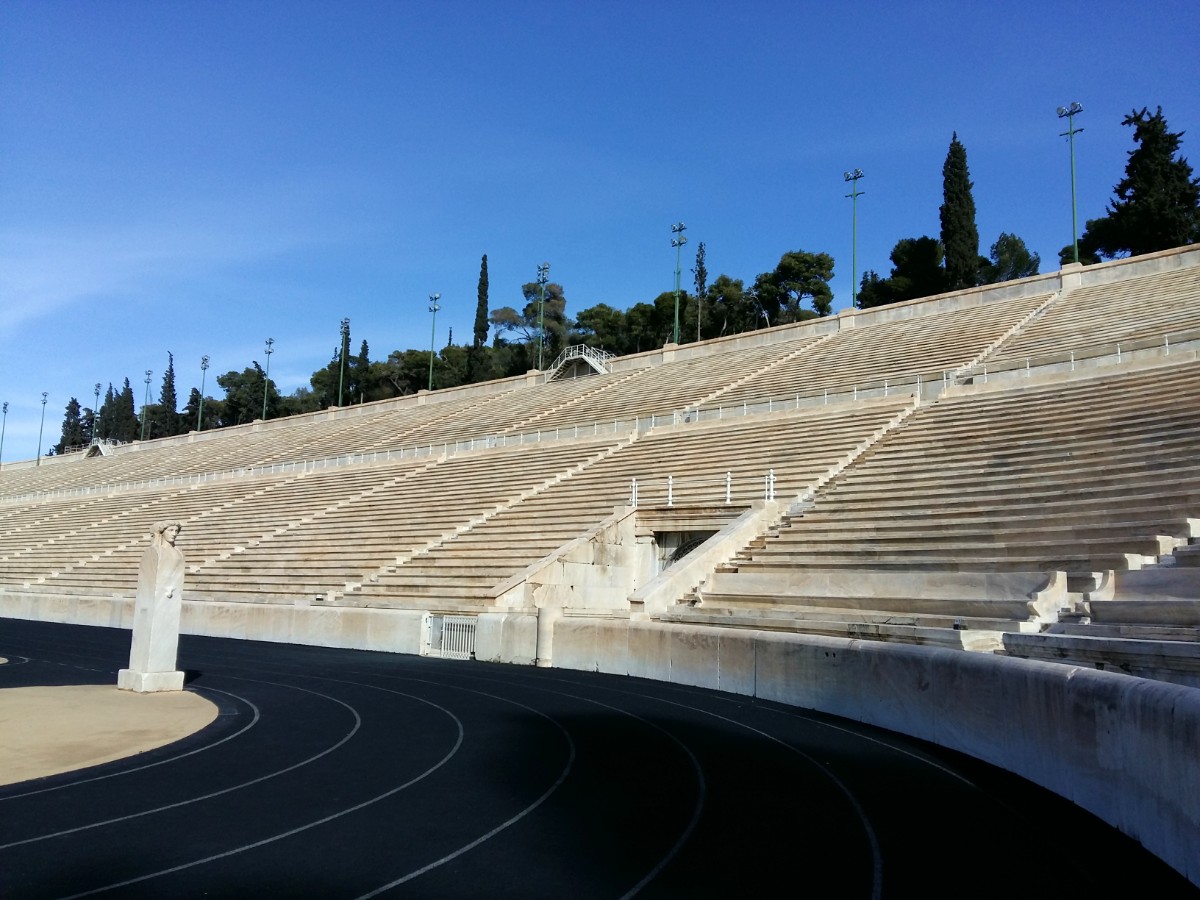
The Great Panathenaia, a tribute to Goddess Athena
As you will know, the ancient Greeks were keen on all sorts of cultural events. Several artistic and sporting events took place all around the Hellenic world.
There were Panhellenic Games, such as the Olympic Games, and regional Games. These major events were organized to honour the 12 Olympian Gods.
The most important cultural event in Athens were the Panathenaic Games, also known as the Panathenaia. They were dedicated to Athena, the patron goddess of the city.
It is not exactly clear when the first Panathenaia were held. Perhaps it was the mythical King, Theseus, who established the games. It is known for certain that the games were held in Athens as early as 566-565 BC.
There were two versions of the Panathenaia. The Great Panathenaia took place every four years, while the lesser Panathenaia happened on an annual basis.
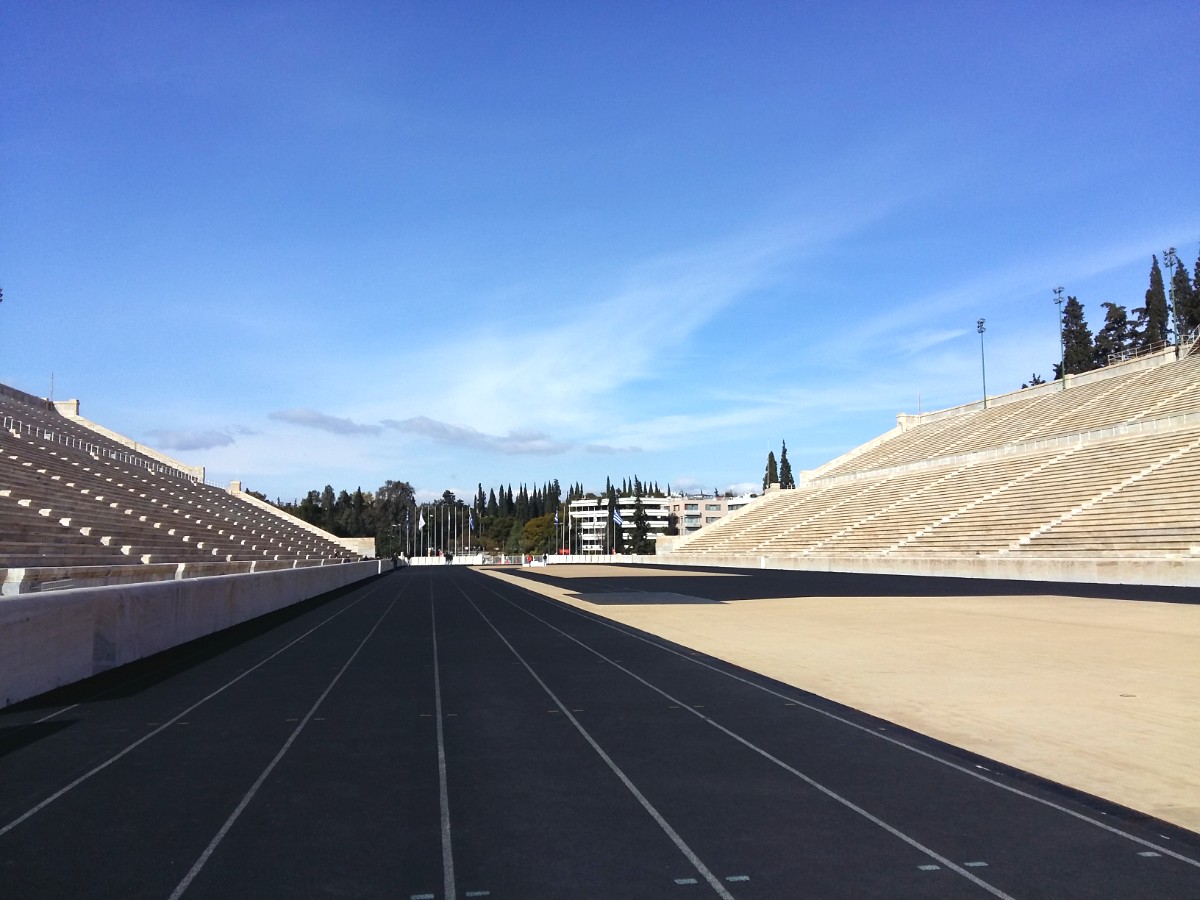
Events during the Great Panathenaia Games
The Great Panathenaia lasted for nine days. They began with a ceremonial procession, starting from Kerameikos cemetery and ending on the Acropolis hill.
During this impressive ceremony, a supersized veil, woven by young Athenian maidens, was transported all around the city. Eventually, it was offered to the chryselephantine statue of Athena, which was inside the Parthenon.
The Games consisted of several types of contests and events, which took place in various venues. There were athletic events for different age groups, including equestrian games and boat races. In addition, there were musical and artistic competitions.
Only men and boys participated in the Panathenaia. The nude male athletes who won the competitions were awarded with several amphorae of olive oil. The award-winning ceremony was followed by celebrations.
Construction of the Panathenaic Stadium
In 338 BC, the orator Lycurgus was appointed to monitor the finances of Athens. It was his decision to build a new stadium, to host the Panathenaic Games.
The ancient stadium was built between two hills, Ardettos and Agra, on the banks of Ilissos River. It is likely that a lot of land was removed, in order for the surface to be flat enough.
Originally, the stadium had a rectangular shape, and was mostly made out of limestone, with wooden seats. The first Great Panathenaia were held in the new stadium in 330/29 BC.
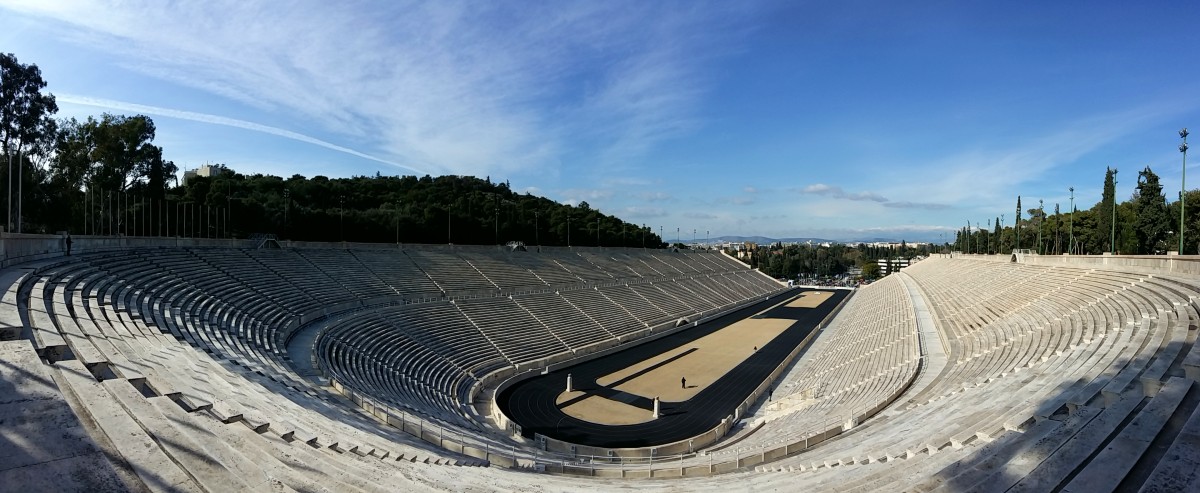
The Panathenaic Stadium during the Roman times
During the Roman period, under the rule of Roman emperor Hadrian, the stadium was restored and reconstructed. Herodes of Atticus, the affluent orator who also commissioned the Herodion theatre, covered a lot of the expenses.
White Pentelic marble was used liberally to reconstruct the stadium, which acquired a new horseshoe shape. It is estimated that the new stadium could fit up to 50,000 spectators.
In subsequent years, the stadium hosted gladiatorial fights and other similar events that were popular all around the Roman Empire.
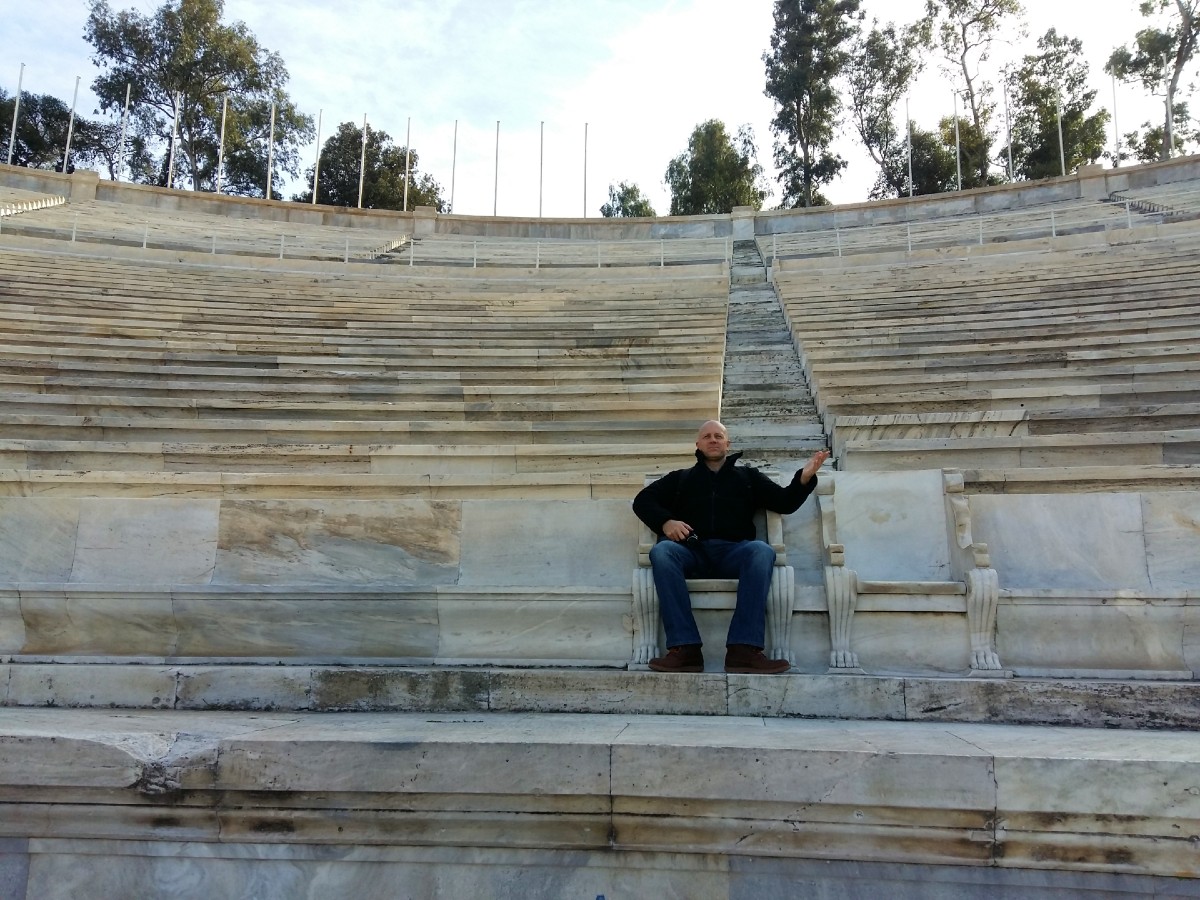
Decline of the ancient monument
In the centuries that followed, Christianity took over the ancient world. Eventually, these “barbaric” celebrations were banned and ceased to exist.
Like all other ancient monuments, the Panathenaic Stadium lost its former glory. The beautiful marble was gradually detached and used in the construction of other Athenian buildings.
Archaeological excavation around the Panathenaic Stadium began in the 19th century. By that time, all the white marble was gone, and the stadium had fallen into decline.
Zappas Olympics
So how did the Panathenaic Stadium come into the spotlight again?
A few decades after the Greek Revolution in 1821, a number of people were interested in the revival of the Olympic Games.
One of them was the Greek benefactor Vangelis Zappas. He organized the first so-called Olympia Games, or Zappas Olympics, in 1859. They were held in Omonia square, and were meant to be the first of a series of Games.
Unfortunately, Zappas died in 1865, leaving a large sum to be used for subsequent Games. After his passing, a committee was appointed to continue his work. This included the construction of Zappeion Megaron, a beautiful neoclassical building designed by the Danish architect Theophil Hansen.
In 1870, the second Olympia was organized in the Panathenaic Stadium, which had been partly refurbished, following Zappas’ wishes.
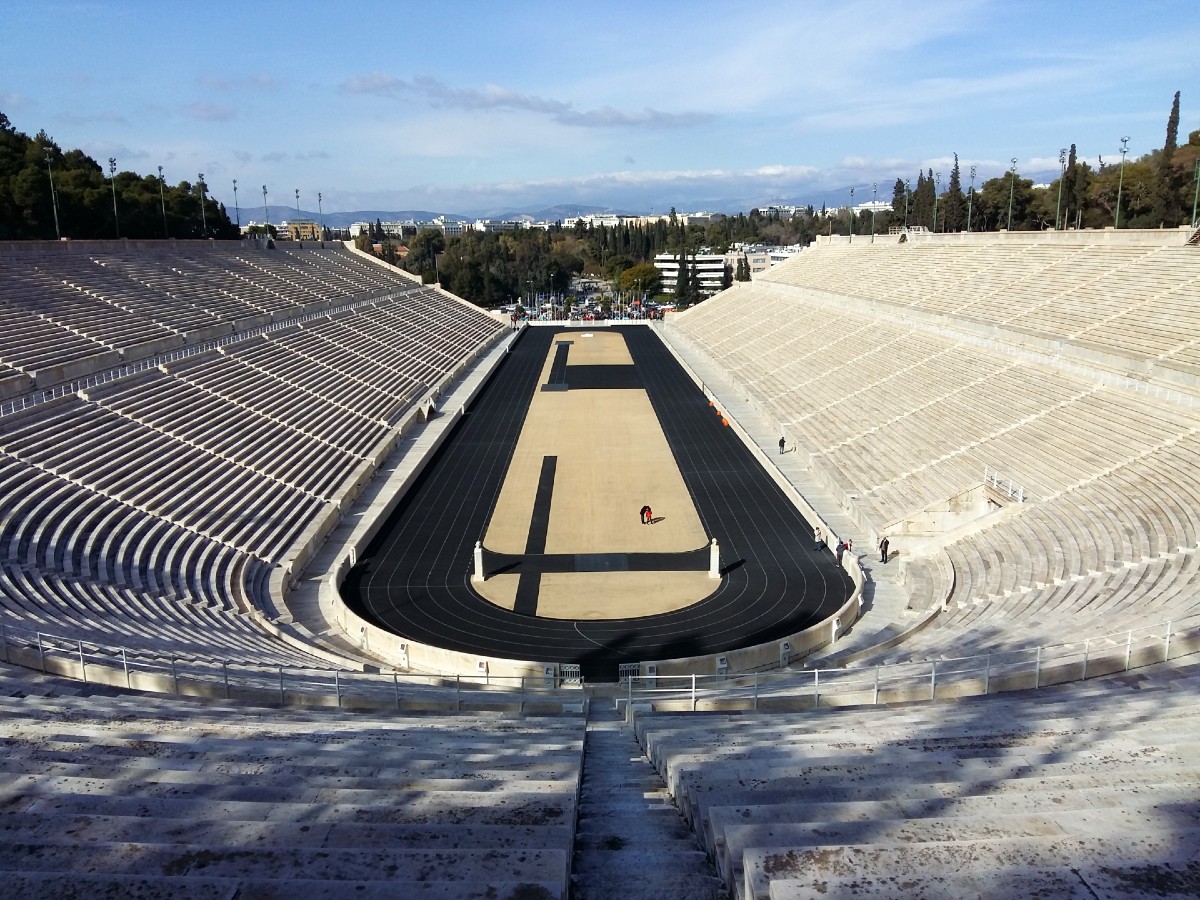
Revival of the Olympic Games
Zappas was not the only person who aspired to reproduce the original sports event. In the late 19th century, there was a lot of interest in reviving the concept of the ancient Olympic Games.
In 1894, a French educator and historian, Baron Pierre de Coubertin, organized an International Olympic Conference in Paris, to discuss this idea.
During the conference, the delegates decided to organize the first modern Olympic Games in Athens, in 1896. As the original Olympics had started in Ancient Olympia, in the Peloponnese, it made sense for Greece to be the host country.
For this purpose, an Hellenic Olympic Committee was founded. Its first president was the crown prince Constantine.

The first modern Olympics
There was one minor issue. Even with Zappas’ previous donations, there was no Olympic stadium at the time, and the country’s finances didn’t exactly allow for an expensive construction.
The reconstruction of the stadium was made possible due to another famous Greek benefactor, George Averoff. After being approached by princ Constantine, the successful businessman covered the enormous expense of the stadium’s reconstruction.
Just like in ancient times, white Pentelic marble was used again. A new name was given to the stadium, Kallimarmaron, indicating the beauty of the marbles.
The stadium was restored according to its shape during the Roman Era. Its new capacity was over 60,000 people, and it was ready to welcome the first modern Olympic Games.
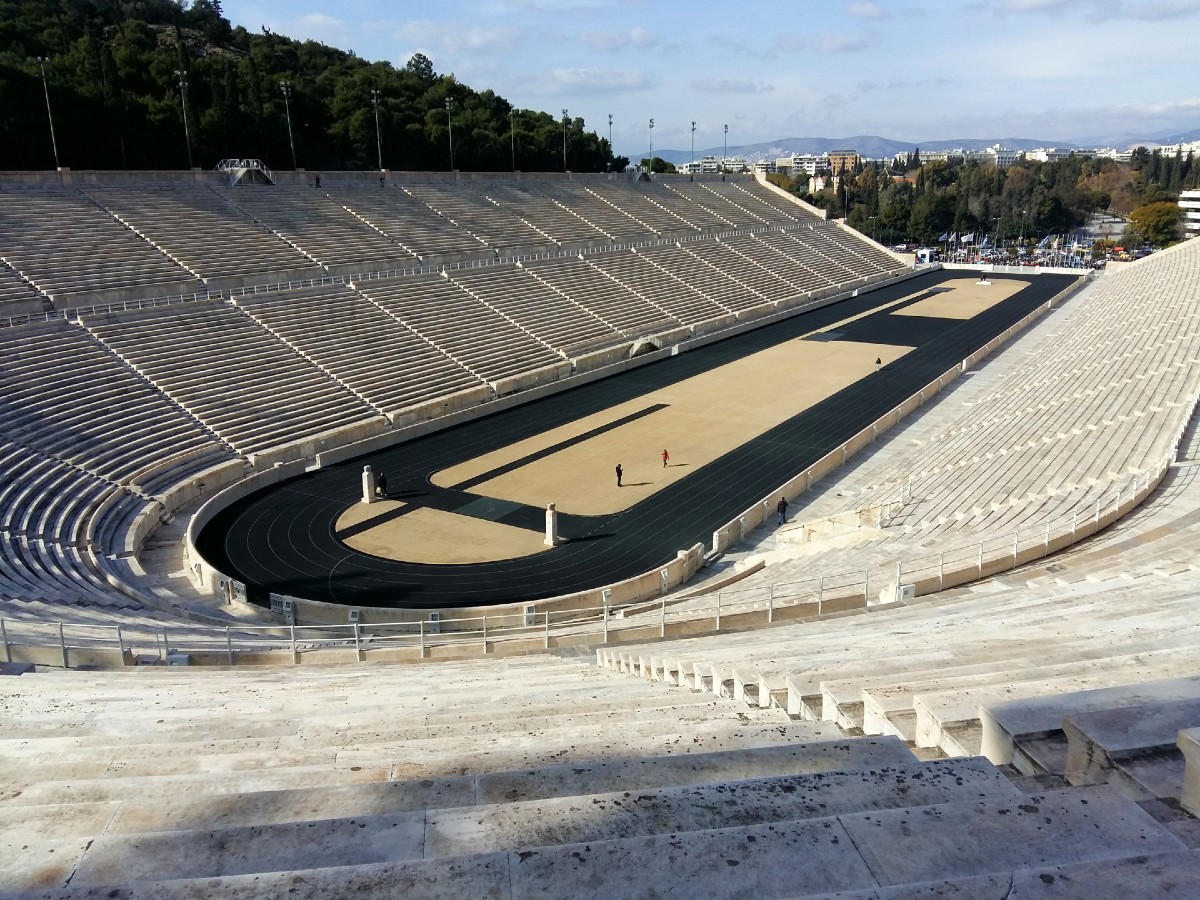
Spyros Louis wins the first Marathon
The first modern Olympic Games were held in the stadium in March / April 1896. There appears to be no consensus over how many athletes participated, or how many countries were represented. The majority of athletes were of Greek origin.
The highlight of the event was when Spyros Louis, representing Greece, won the Olympic Marathon race. The audience went wild, and apparently carried Louis all the way up to the king’s seat.
Since then, the stadium has been used for various celebrations and opening or closing ceremonies of athletic events. Occasionally, concerts and other cultural events take place here.
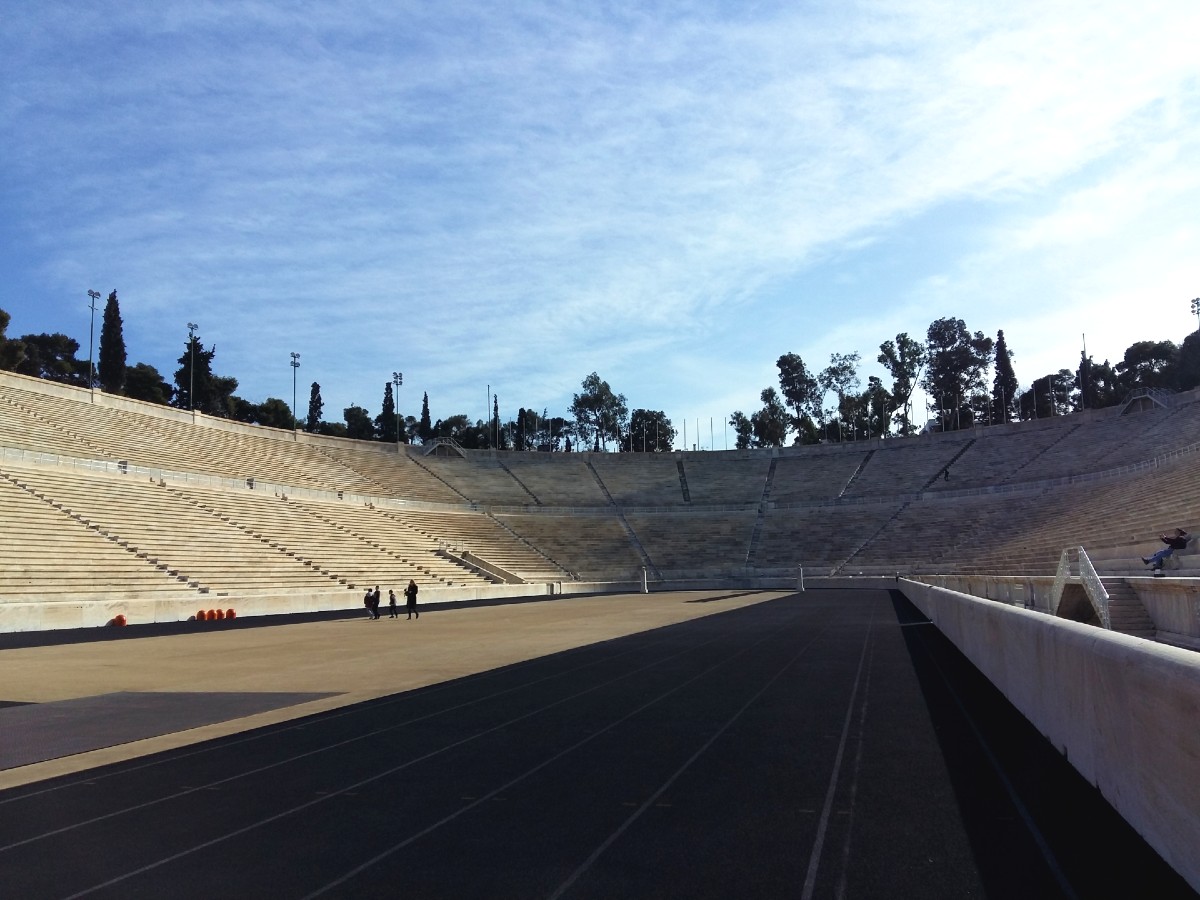
Sports activities and ceremonies – The end point for the Marathon Route
The annual Athens Classic Marathon, happening annually in the Greek capital on the second Sunday of November, ends at the Panathenaic Stadium.
This 42.2 km route begins in the ancient Marathon, and ends right inside the Kallimarmaron. If you are in Athens on that day, make sure you come over and cheer the participants – it’s a very unique event!
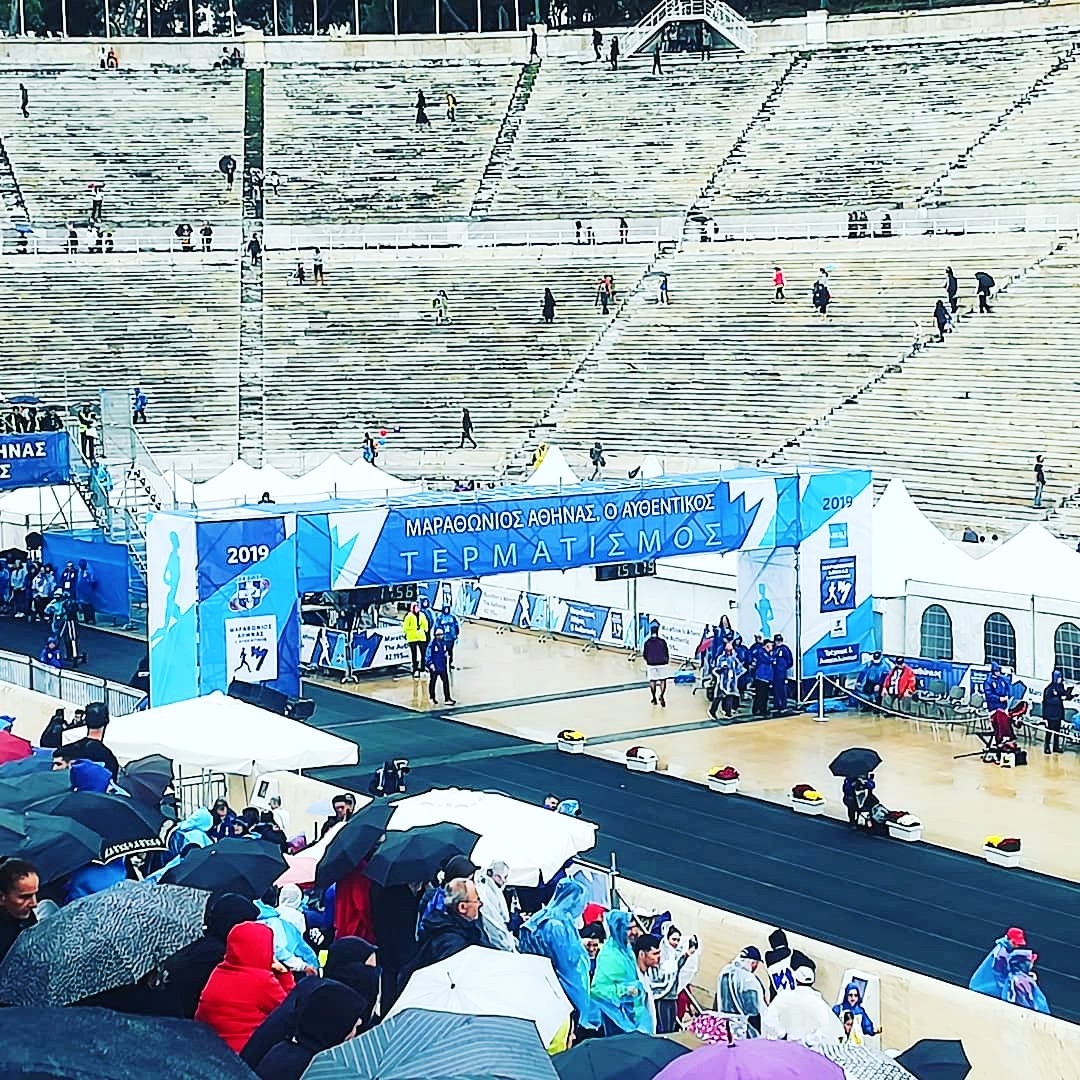
Also, every four years, before the official Olympic Games begin, the Olympic Flame handover ceremony takes place in the Stadium. This symbolic opening ceremony begins in Ancient Olympia, where a prayer to Apollo, the God of Light, is read out.
The flame leaves Olympia and passes by several Greek cities on its way to Athens, where it stops at the Panathenaic Stadium. Afterwards, it sets off to the next Olympic city.
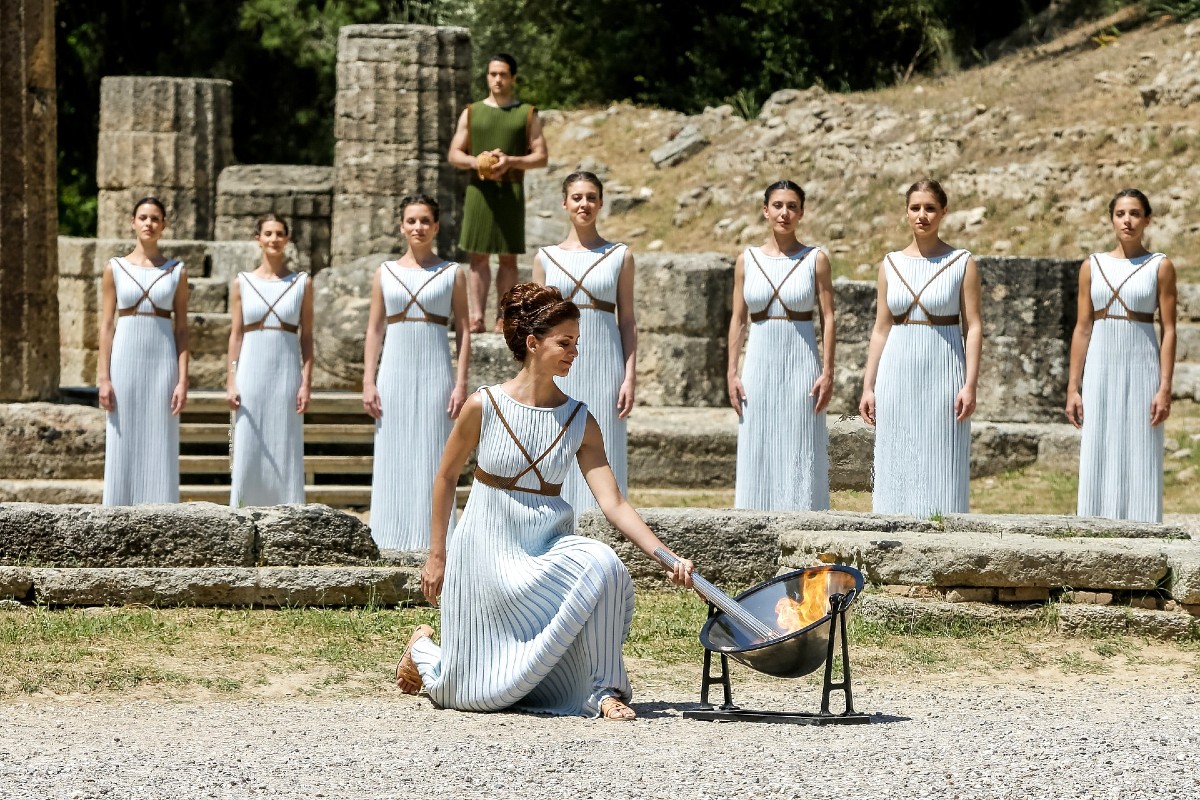
Fun facts about the Panathenaic Stadium
There are many fun facts related to this amazing stadium!
- It is the only stadium in the world where the Olympic Games have taken place three times – in 1896, 1906 and 2004
- It was the first ancient stadium to be used in modern times
- The Kallimarmaron is the only stadium in the world made out of Pentelic marble
- It was home to the biggest basketball game audience ever, in 1968. The Greek team called AEK defeated Slavia Praha (89-82). An estimated 80,000 people were inside the stadium, with another 40,000 standing right outside!
Visiting the Panathenaic Stadium
I’ll be honest – I hadn’t appreciated how impressive the Panathenaic Stadium is, until I visited and walked around with my partner on a winter day. We were there with low temperature, but some very welcome sunlight.

The stadium is really huge, and as we were pretty much the only people there it seemed even bigger. When we walked up the top, close to Archimidous street, the view was really awesome.
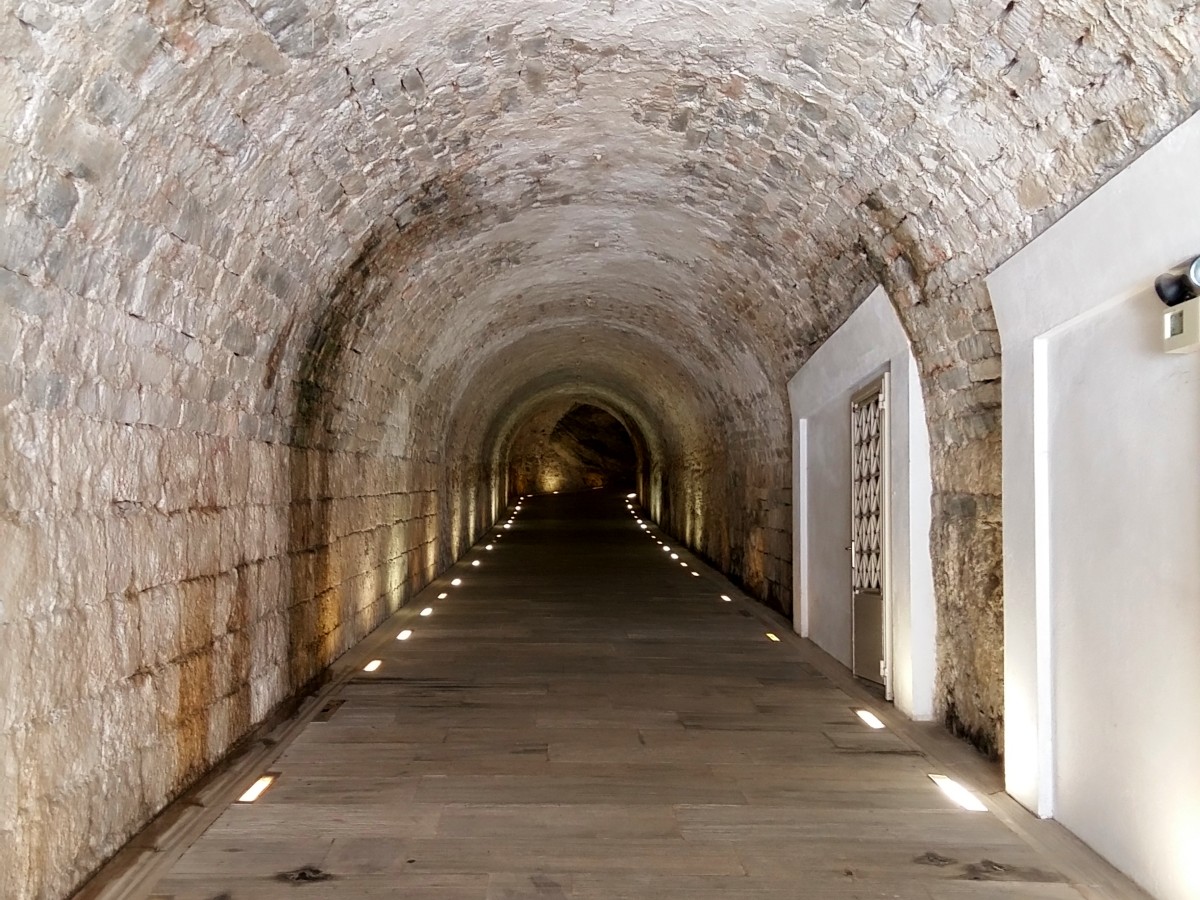
Go through the vaulted passage, and you will get to a small museum. There is a cool exhibition with memorabilia from previous Olympics, ceremonies and other events. I loved this poster from the 1968 Mexico City Games!

All in all, we spent a couple of hours in the stadium and museum, but we took our time. You can probably visit in an hour if you are in a rush.
There is a small canteen outside the stadium, where you can get water and snacks. There are also paid toilets right outside the stadium.
How to visit the Panathenaic Stadium
The most pleasant way to get to the stadium is to stroll through the National Gardens of Athens. Then you can cross the avenue and walk over to the Stadium.
If you are staying close to the Acropolis or the Temple of Zeus, the stadium is a 10-15 minute walk.

Opening hours in summer (March – October) are 8 am to 7 pm, while in winter (November – February) the stadium closes at 5 pm. In summer, it’s best to visit outside the afternoon hours, as the marbles are reflecting the strong sunlight and it gets really hot.
General admission tickets cost 12 euro, students and seniors from the EU pay 6 euro and children under 6 enjoy free entrance. You can get a free audio guide with your ticket, explaining more about the stadium.
Entrance is free on 18 April, International Day for Monuments and Sites. All the ancient sites in Athens are free on that day, so you can visit as many as you have time for!
And if you are looking for a unique Panathenaic stadium tour, you can’t go wrong with this amazing activity!!! It’s ideal for everyone, especially families.
FAQs about the Panathenaic Stadium in Athens
Here are some questions often asked by visitors:
What was the Panathenaic Stadium used for?
In ancient Greece, the Panathenaic Stadium was used to host the Great Panathenaia Games, which were a tribute to goddess Athena.
What were stadiums used for in ancient Greece?
Ancient Greek stadiums were used to host athletic games and cultural events, which were organized as a tribute to the 12 Olympian Gods.
Is the Panathenaic Stadium still in use?
Yes. Since the first modern Olympics in 1896, the famous Greek stadium has hosted several athletic competitions and big concerts. You can visit the stadium along with the small Olympic Games museum on a daily basis.
How much does it cost to go to the Panathenaic Stadium?
The entrance fee to the Panathenaic Stadium costs 12 euro for adults, and various discounts are available. Children under 6 years old visit for free. For more information, check the Stadium’s official website.
Can you run in the Panathenaic Stadium?
Yes, you can go for a run in the Panathenaic stadium. In fact, running inside an ancient monument with such a rich history is an unforgettable experience!
More Athens travel guides
If you enjoyed this article, you might also be interested in these other travel guides to Athens:
- 30 best things to do in Athens
- 3 Day Itinerary for Athens
- 2 Day Itinerary for Athens
- Best Museums in Athens
- How to take the Athens metro
- How to take the Athens airport metro

Hi! I’m Vanessa from Athens, and I love exploring my city’s monuments and ancient sites. If you are interested in the history of the Olympic Games, the Panathenaic Stadium is a must-see attraction in Athens. Follow my FB page and join my FB group for more Greece-related info!

Hello Vanessa
Thank you for your weekly email, I really look forward to it. Such a lot to read about my favourite subject!
Really interested in the Panathenaic article.
Ran my first marathon there in 1994 and entering the stadium at the end really brought a lump to the throat.
Ran it again in 1996, 100th anniversary, and there were engaged couples running who invited other runners to attend their weddings after the race.
Also memorable, the drink stations ran out of water and we had to buy more in local shops. Love the Greeks!
Thanks again, keep it up
Oh wow some very cool stories!!! Well done for running the Marathon… I’d love to see some photos if you have any!!